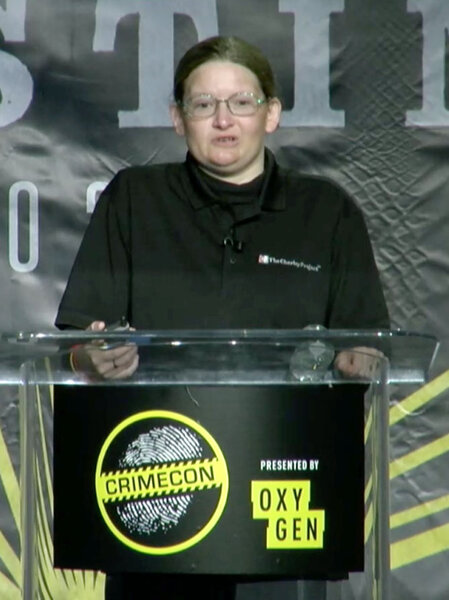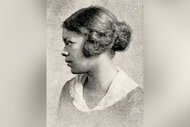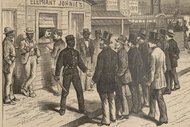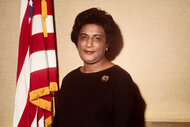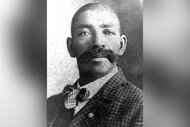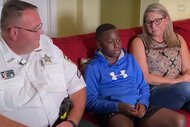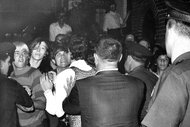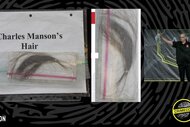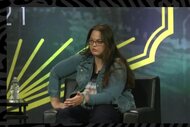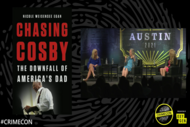Create a free profile to get unlimited access to exclusive videos, breaking news, sweepstakes, and more!
Hear From The Founder Of The Largest Privately Run Missing Person’s Database
The Charley Project features cases of people missing for more than one year. It has surpassed more than 14,000 entries.

Meaghan Good didn’t initially plan to start a missing persons database. She first wanted to look up pictures for a stories she was writing when she was 12 years old and came across the National Center for Missing & Exploited Children’s website. She went on to work with Jennifer Mara, a founder of the nonprofit organization The Doe Network, which helps connect missing persons cases to John and Jane Does. Eventually, Good created the Charley Project, a website to lay out case details and critical information about missing persons.
Good started the site in 2004 at the age of 19. Now, it’s the largest privately run missing persons database with more than 14,000 cases entered, Good says. (The vast database NamUs, the National Missing and Unidentified Persons System, is run by the federal government.)
This has been my labor of love this entire time.”
Good maintains and updates the website on her own — a feat she says is possible thanks to her autism.
“A lot of autistic people have what they call their special interest, which is some esoteric topic that they just get completely absorbed in,” Good said. “For me, it’s missing persons. I mean I can talk about it all day.”
During a panel discussing her work at the true crime convention Crime Con 2021, presented by Oxygen, Good spoke candidly about being diagnosed with autism and bi-polar disorder and how it has helped her mission.
“If it were not for my autism, I would not be able to run the Charley Project,” Good said. “I think it gives me the level of emotional detachment necessary to be able to write many of these stories up, many of which are just horrific or sad.”
In order to be posted on the Charley Project, a case should be within the United States and its territories. The individuals profiled also must be missing for at least a year, in part because Good runs the site by herself and most missing persons cases are resolved within a matter of weeks.
“It’s extremely rare for a case to be missing for longer than a year,” Good said.
The oldest case featured in the database goes back to 1910, Good said. Dorothy Arnold came from a wealthy family and was meant to meet her mother for lunch in New York City, but never showed, according to the Charley Project.
She decided to name the database after a well-known kidnapping case: Charley Ross.
I wanted to be Charley to be remembered.”
It’s referred to as the first missing child case to make national news headlines, according to the Library of Congress.
“He was a little boy who got kidnapped back in the 1870s,” Good told Oxygen.com in a video interview. “It was a really, really famous case at the time because it was the first really big child abduction for ransom in the whole country.”
The database has helped connect the dots in solving some missing persons cases. Troy Darren Gumbine disappeared from Texas in 2004, but wasn’t identified until a woman in Ireland noticed a connection in jewelry between a John Doe case and the missing person post on the Charley Project.
“This is what’s great about the internet,” Good said. “The linkage of all these people working together. A man disappears from Texas, gets found in Arizona, someone in Indiana writes up the case, and then someone in Ireland solves it.”
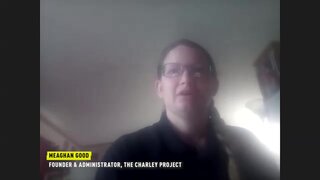
“It’s kind of like when you’re in a cemetery and you look at a gravestone and they’ll have the name of the person and the birthdate and the date of death and they’ll have a line in between,” Good said. "Their whole life is in that line. I want to tell the story of what was in that line before they were gone.”
Running the Charley Project has become a full time job for Good, but she says she's able to keep up the work with the help of her husband’s teaching salary. The site also takes donations.
